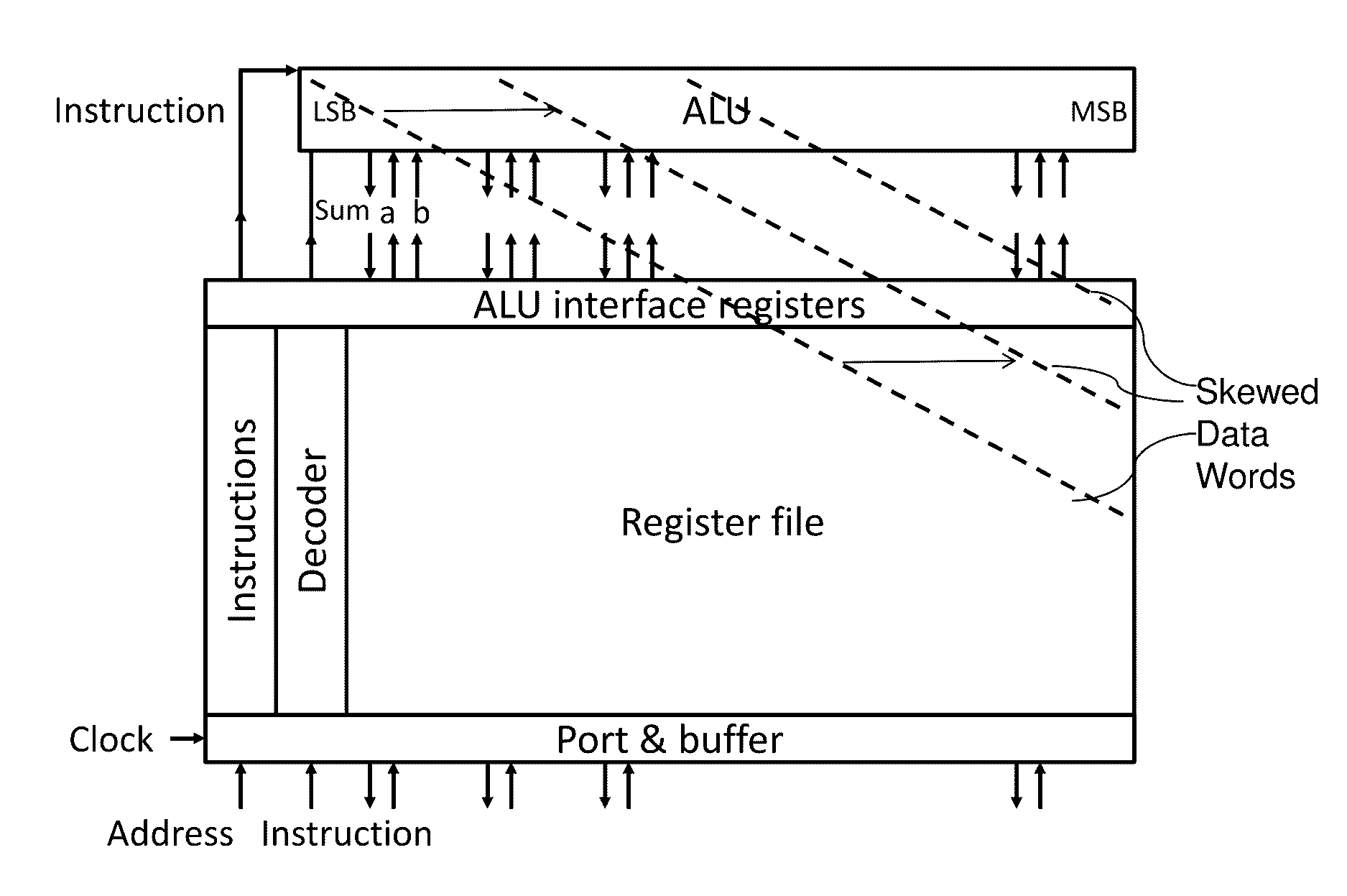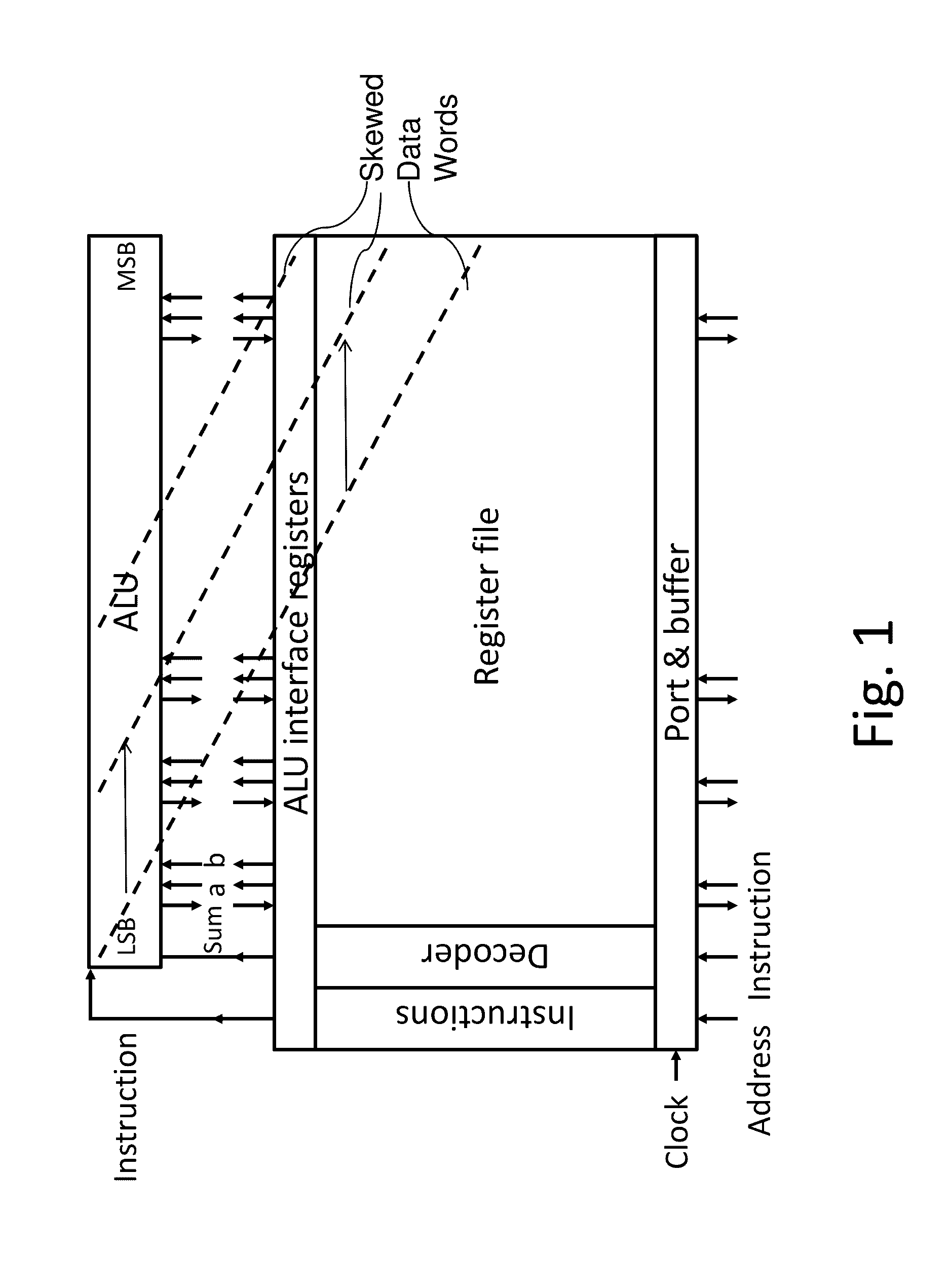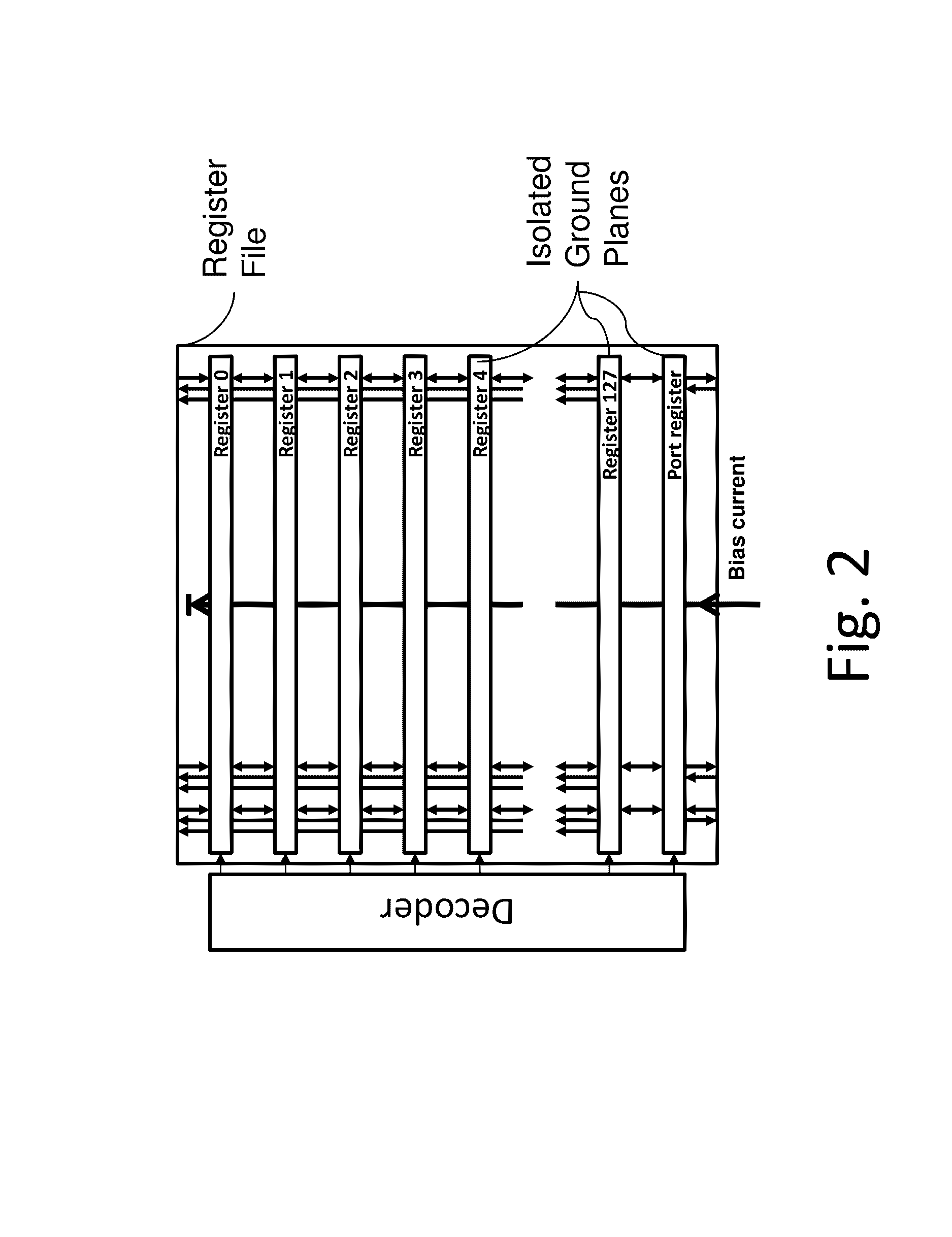System and method for cryogenic hybrid technology computing and memory
a hybrid technology and computing system technology, applied in computing models, superconductor devices, instruments, etc., can solve the problems of long n-bit delay, inconvenient small voltage 200 v, and slow processor to an unacceptable degree, so as to achieve effective low-loss microstrip transmission lines, easy power dissipation, and easy combination
- Summary
- Abstract
- Description
- Claims
- Application Information
AI Technical Summary
Benefits of technology
Problems solved by technology
Method used
Image
Examples
Embodiment Construction
[0094]I. Superconducting Energy-Efficient Wave-Pipelined Digital Processor
[0095]FIG. 1 shows a conceptual diagram of the wave-pipelined datapath and timing scheme for a proposed high-speed energy-efficient superconducting microprocessor, comprising an arithmetic logic unit (ALU) and register file, with skewed words that represent asynchronous propagation of carry bits through the processor. This multibit ALU comprises a cascade of 1-bit ALUs, and one of its unique features is that both the instruction and the carry bit cascade asynchronously through the ALU. This architecture combines the timing advantage and modular scaling found in a ripple adder with the speed advantage of asynchronous circuitry.
[0096]A block diagram of the architecture of the register file is shown in FIG. 2. This consists of an array of 128 registers, each with an identical modular structure, designed for a 64-bit word. Since the bias current for each of these is the same, this enables the current bias for each...
PUM
| Property | Measurement | Unit |
|---|---|---|
| Temperature | aaaaa | aaaaa |
| Frequency | aaaaa | aaaaa |
| Temperature | aaaaa | aaaaa |
Abstract
Description
Claims
Application Information
 Login to View More
Login to View More - R&D
- Intellectual Property
- Life Sciences
- Materials
- Tech Scout
- Unparalleled Data Quality
- Higher Quality Content
- 60% Fewer Hallucinations
Browse by: Latest US Patents, China's latest patents, Technical Efficacy Thesaurus, Application Domain, Technology Topic, Popular Technical Reports.
© 2025 PatSnap. All rights reserved.Legal|Privacy policy|Modern Slavery Act Transparency Statement|Sitemap|About US| Contact US: help@patsnap.com



